Stories of courage and dedication: Humanitarians on Gaza’s front line
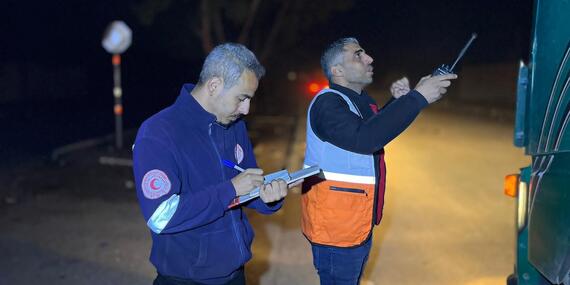
By Basma Ourfali
Mouhammed, the Director of Emergency and Disaster Management at the Palestine Red Crescent Society (PRCS), wakes at 6:30 a.m., catching only about three hours’ sleep these days. He and 25 PRCS volunteers share a room in the emergency operation centre in the north of the Gaza Strip.
Since 7 October, intensified hostilities in Gaza have led to grave humanitarian consequences. Tens of thousands of people have been left dead and injured across the Strip, and homes, schools, medical facilities and other infrastructure have been destroyed.
During these challenging times, PRCS is one of the main actors providing support in rescue operations and assistance, as well as facilitating the entrance of humanitarian assistance via the Rafah crossing.
By 7 a.m., Mouhammed's already dividing responsibilities among the teams.
He explains: “We recover bodies, transfer the injured and people with cancer or kidney diseases to hospitals, and evacuate civilians, especially older people and children, to less dangerous areas. We also support on searching for missing people and reuniting families who are scattered across the Strip.
“One of the scenes that will forever stay with me is when we admitted a severely injured child who was still holding onto a clean loaf of bread. She insisted that we keep it with her, as that was meant for dinner.”
Mouhammed hasn’t seen his wife and three children, who were displaced to the south when the hostilities began. Recurrent power and telecommunication cuts, due to fuel shortages, make it difficult for scattered families to stay connected.
“I miss those moments with my family, cherishing their laughter and seeing the joy on their faces,” Mouhammed says.
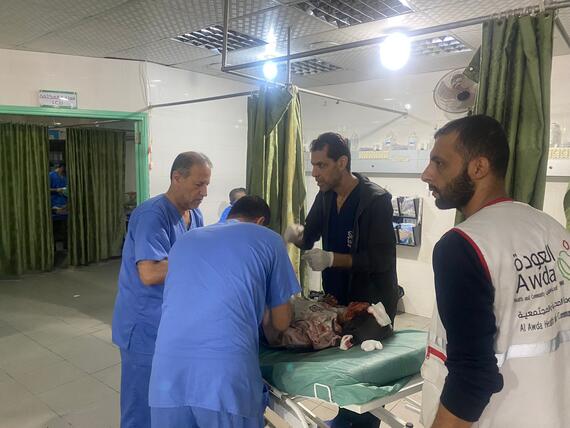
Dr. Ahmed Muhanna, an anesthetist and the Director of Awda Hospital in Tal Al Zataar Camp, in the north, also hasn’t seen his three children and wife since the war began.
He says: “The number of injured people that we receive is huge. The capacity we have is limited and supplies are running out. We also receive displaced people with inflammations, infections and skin maladies due to overcrowded shelters.”
Before the war, 36 hospitals operated in the Gaza Strip. Today, only 14 are functional. They include two small hospitals partially operating and admitting patients in the north, but with only limited services and without surgery capacity. The remaining 12 hospitals in the south are partially functional, as of 6 December.
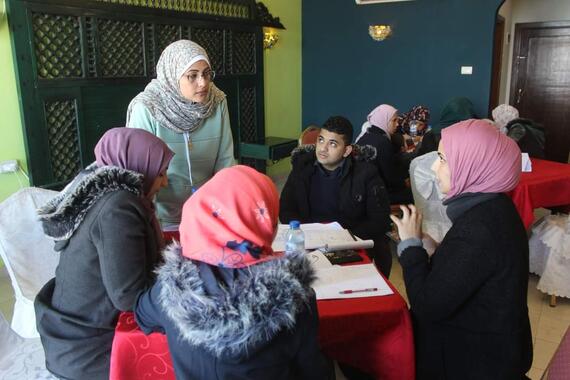
As of 3 December, an estimated 1.9 million people in Gaza – nearly 85 per cent of the population – are internally displaced. Nearly 1.2 million of those people are taking shelter in the 156 facilities of the UN Relief and Works Agency for Palestine Refugees (UNRWA) across Gaza.
Hala is just one of those internally displaced people. A mother of four, she works as a Programme Coordinator at Alianza-ActionAid International, a non-governmental organization (NGO) that provides services to affected women, including psychosocial support and cash assistance.
Hala has been displaced six times, sometimes fleeing at midnight. Her family currently resides in Rafah, south of Gaza, in an abandoned apartment with two other families. Sleep eludes her at night, as she is often woken by her children's screams during hostilities and occasional visits from cockroaches.
“I think about our home, newly renovated just a few months ago,” Hala says. “I worry about our beautiful cat, Smoky, whom I had to leave behind. I left some food for him and opened the windows to allow him to leave. I wonder what happened to him.”
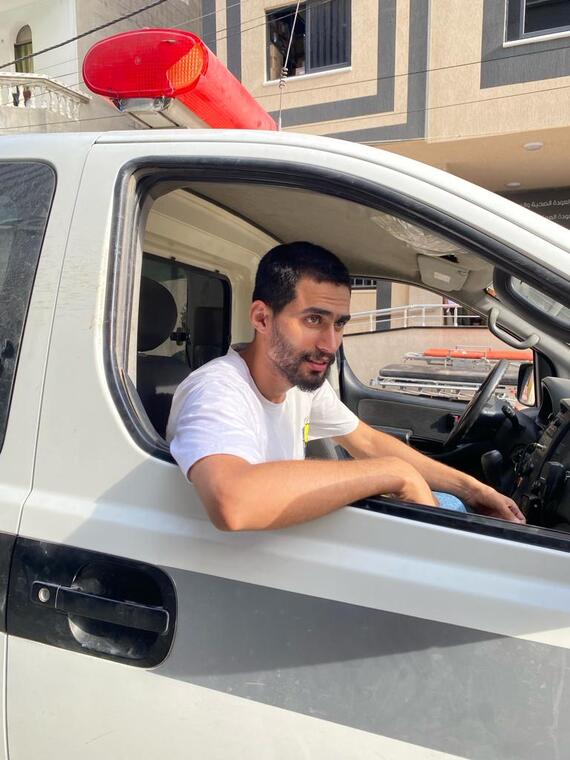
Gazans of all ages are stepping up to support their communities, including 27-year-old Foad Abu Fanoun, a Project Coordinator at Awda NGO. He is now responsible for providing hot meals to patients, displaced families and staff at Awda Hospital in Nusairat Camp in the north.
Foad explains: “Every day we have to provide 600 hot meals, which is the only food that everyone survives on. Aid items, including food assistance entering Gaza, are scarce compared to needs. Finding supplies in the market is quite challenging, so we mostly cook with whatever is available.
“Every afternoon, I developed the habit of gathering stray dogs and cats nearby and feeding them the remaining scraps of meals. It gives me some comfort. I miss simple pleasures of sitting with my family on the balcony, chatting over a cup of tea and watching the full moon.”
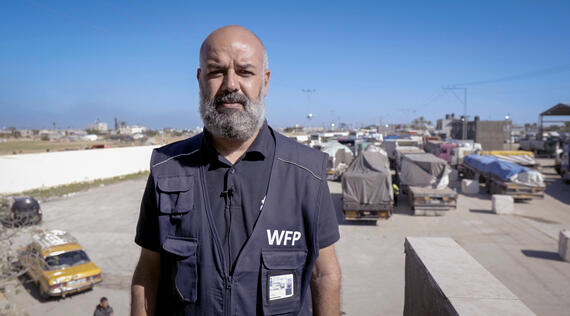
Ayman Shublaq, a World Food Programme (WFP) staff member in Gaza, has witnessed several wars that impacted Gaza before, but they were nothing like what he’s seeing now.
"We’ve been displaced to the south and, like many other families, struggled to find bread or food," he shares "When I leave home for work or errands, I’m never sure if I’ll return to see my family again."
Ayman works with WFP teams to provide food assistance to people in need. However, they face immense challenges, including the destruction of bakeries. The security situation and poor communications further restrain their movement and aid delivery.
During the humanitarian pause, Ayman joined a humanitarian convoy, delivering food to families that had been cut off from assistance for weeks. But returning to Gaza City, his birthplace and family home, was emotional for Ayman, as he found it in rubble.
“I could see the suffering in people’s eyes before they even spoke,” he says.
During the recent seven-day pause in hostilities, WFP assisted about 250,000 people with food parcels, fresh bread, hot meals and electronic voucher redemptions in the few open markets.
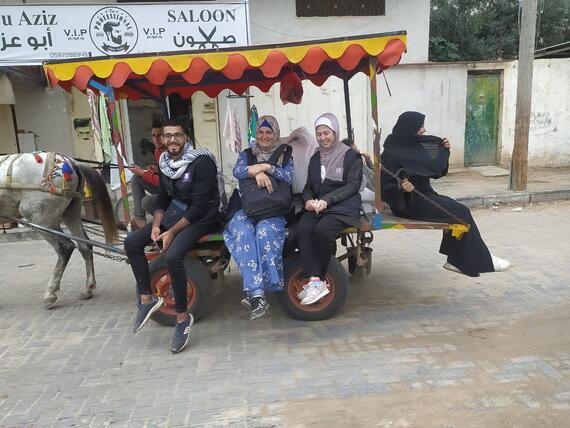
The UN and its humanitarian partners in the Occupied Palestinian Territory are working to meet acute needs. They launched a Flash Appeal seeking US$1.2 billion to implement the response plan to support 2.2 million people in the Gaza Strip and 500,000 in the West Bank.
Using the resources they have, partners are providing assistance and services including drinking water, food, medical supplies and consultations, hygiene kits and psychological services.
Sharek Youth Forum, a youth-led organization, is one of the local actors on the ground providing support to displaced families inside and outside shelters.
“We’re working to fill the gaps and find solutions within the resources and capacity we have,” says Nidal, Sharek’s Coordinator of Emergency and Disaster Management in the Gaza Strip. “Despite our efforts, the level of aid is still far from sufficient to meet the needs.”
Sharek also arranges recreational activities to help children in shelters retain some sense of normalcy.
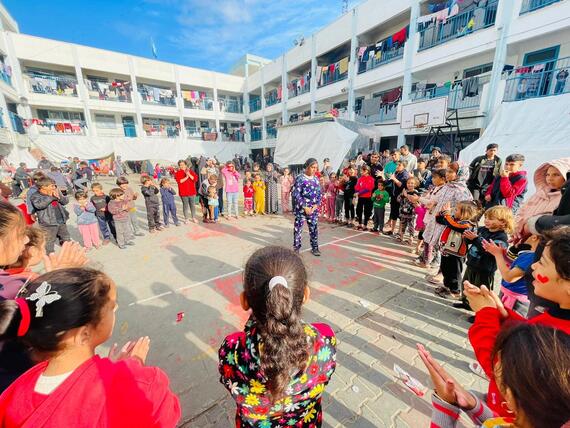
"We notice children are experiencing fear of what they have been through. Many of them have lost their loved ones and homes overnight," Nidal says.
Two months after the conflict began, the people of Gaza are exhausted. They have nowhere safe to go and very little to survive on. They require everything from basic necessities to crucial health services and dignified shelters.
But above all, they need the silence of guns.
